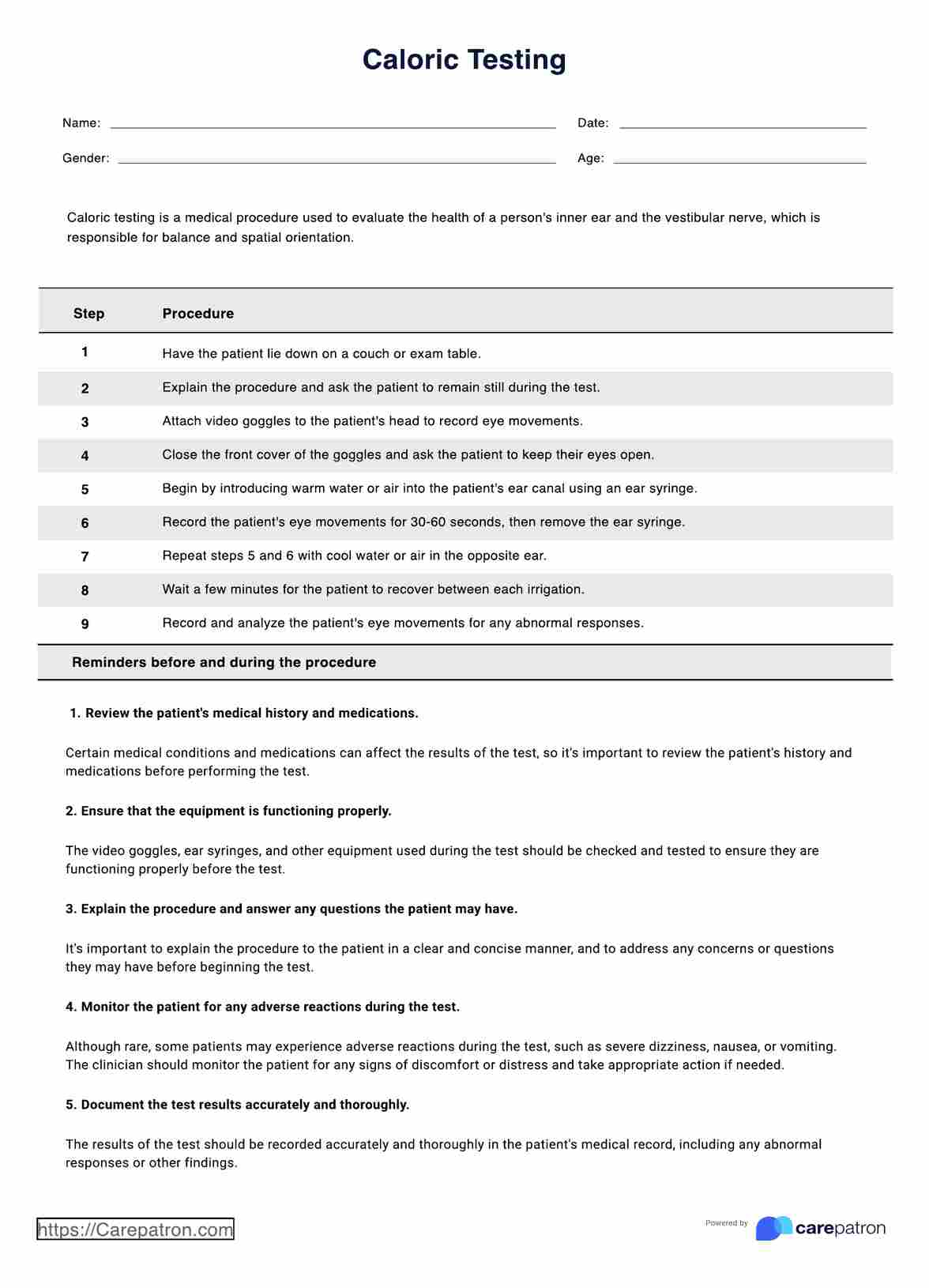The caloric test measures the function of the inner ear and vestibular nerve by evaluating eye movements in response to warm or cool water introduced into the ear canal.

Caloric Test
Download a free printable Caloric Test example PDF. Learn what a Caloric Test is, how to use it, when to use it, and its benefits.
Use Template
Caloric Test Template
Commonly asked questions
The purpose of the caloric test is to diagnose conditions that affect the inner ear and vestibular system, such as Meniere's disease, vestibular neuritis, and BPPV.
A caloric test can be used to evaluate patients with balance disorders, such as dizziness, vertigo, or unsteadiness. It can also be used to assess the severity of a patient's balance disorder and guide treatment decisions.
EHR and practice management software
Get started for free
*No credit card required
Free
$0/usd
Unlimited clients
Telehealth
1GB of storage
Client portal text
Automated billing and online payments











